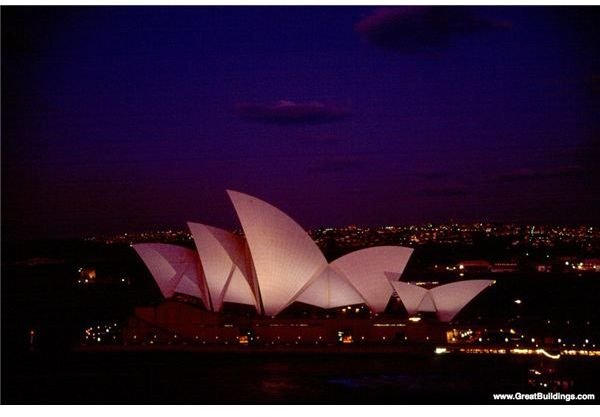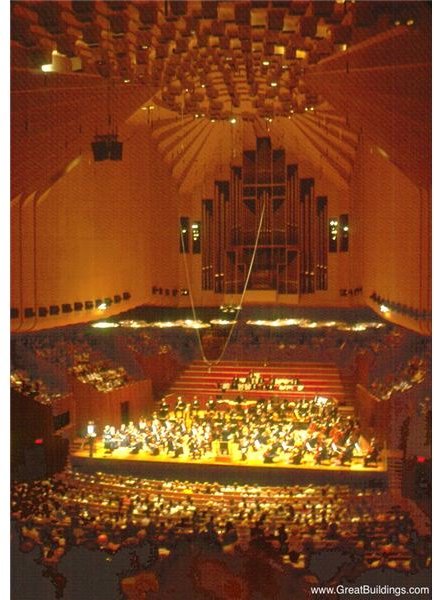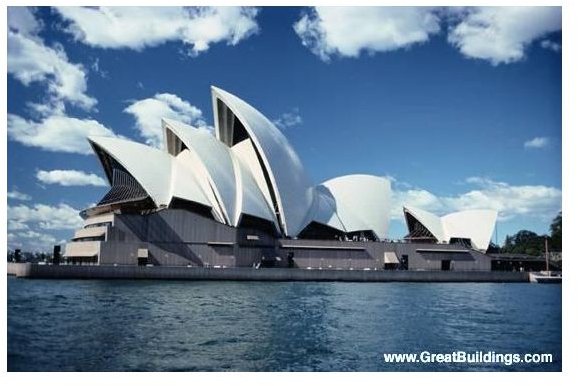Constructing the Spectacular Sydney Opera House
Introduction
The name Sydney, Australia is synonymous with its world famous architectural monument, Sydney Opera House. An excellent piece of extraordinary architectural skills, Sydney Opera House is to Australia what the Eiffel Tower is to Paris.
The Sydney Opera House was constructed at Bennelong Point, a place that was originally a wharfing area with a tram and storage barn that occupied a major part of the site. A competition was held to acquire the right design, however, the early requirements of a performing arts complex demanded for a building that consisted of two theatres occupying a large hall for opera, ballet and large scale symphony concerts, which could accommodate 3,000 to 3,500 audience members from around the globe. John Utzon, the Danish architect, was declared the winner of the competition and was thus awarded the task of designing the monument.
Construction Process
The construction of the Opera House began in the initial months of 1959. Even after four years of research, Utzon modified his design and proposed a defined spherical geometry for the roof vaults of the Opera House. The entire construction process had been divided into three main stages – podium or platform, roof, and interior. The platform and roof were designed by John Utzon himself, at a cost of $5.2 million. The construction of the platform, or the first stage, was confronted with several stumbling blocks such as unpleasant weather and several construction problems. Moreover, the first stage started earlier than the due date because of unnecessary forcing from the government. This forced start led to many constructional problems at a later stage to such an extent that a major part of it had to be rebuilt.
The second stage consisted of constructing the main part of the structure- the roof. Several designs were tested to make a roof that is both structurally and economically viable. It was finally decided that the shell structures will be created as sections of a sphere. This solution allowed the constructers to make the arches in a common mould, though of varying lengths, so that they can be placed next to each other to form a spherical shape. Approximately, 2,400 precast ribs and 4,000 roof panels were made in an on-site factory for the construction process.
The third and last stage, the interiors, were designed by Peter Hall, who took charge of the designing process from Utzon. Also in 1988, the Forecourt of the Opera House was refurbished by Andrew Anderson. The upgradation of the building, including the exterior and the interior, which took place during the years 1988-1989 was valued at $120 million.
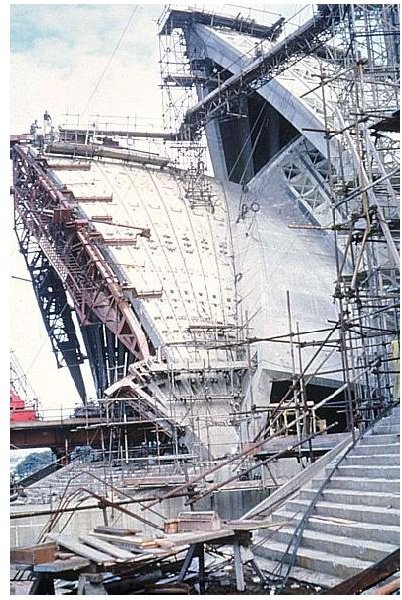
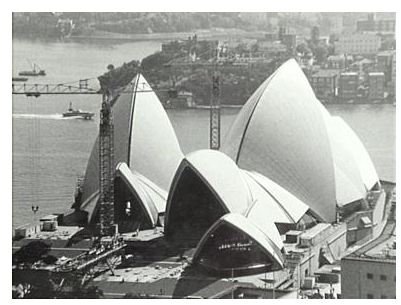

Additional Information
The Opera House consists of an additional underground car parking area, which has been designed by architect Leif Kristensen, who has earlier worked on the structure - the theatreworks, studio, Ch Anteroom. The Opera House had a second round of renovation during 1998-2002 with the Richard Johnson, and John and Jan Utzon providing the expertise.
The Opera House has one-thousand rooms apart from the fine main auditoria. The total area of the building is 2.2 hectares, including an unused area of approximately two hectares. It has a length of 185 meters, width of 120 meters, and height of 67 meters. The specially designed roofs are built using two thousand one hundred and ninety four concrete sections which weigh up to fifteen tonnes each. The sections are placed together with the help of a tensioned steel cable measuring three hundred and fifty kilometers in length. The weight of the roof is approximately 27,230 tones and are covered with 1,056,006 Swedish ceramic tiles which are set up in 4,253 precast lids. The structure is placed in the monument with the help of 500 concrete piers. Pink granite, brush box, and white plywood from birch trees are also used in the construction of the building. Besides these, plain tinted glass of 6,025 square meters was used while building the Sydney Opera House. The continuous power for the construction process is made available at the site using hundred and twenty distribution boards.
The Sydney Opera House comprises one reception hall, five rehearsal studios, four restaurants, six theatre bards, extensive lounge areas, and sixty dressing rooms and suites. Apart from these, it also consists of a library, artist’s lounge and canteen area, offices, and an extensive machinery space. The original architect, John Utzon who was assisted by his Denmark based architect son Jan and leading Australian architect, Richard Johnson of Johnson Pilton Walker, perceived the monument to be a musical instrument which calls for little maintenance and fine tuning on a regular basis to be able to give a performance of the highest level.
The only hurdle in the construction of the monument had been the government during that time. The formation of the New Liberal government in 1956 brought the work to a standstill as the Minister of Works and David Hughes questioned the design, schedules and cost estimates. This led to Utzon placing his resignation letter and leaving the country with his family.
The Opera House’s architect thought of the House as a civic focus to link Sydney with its harbour, a processional way from Circular Quay to theatres and as an Ancient Greek theatre seating. It was on 28th September 1973 that the first performance took place at the great Opera House. The performance was given by the Australian Opera’s production house - War and Peace by Prokofiev. The Sydney Opera House was formally inaugurated by Her Majesty Queen Elizabeth II in October 1973.
Around $102 million is the estimated total expenditure for constructing the Sydney Opera House.
